Cinematic establishing shots elevate your filmmaking by setting the tone and creating a powerful first impression. They provide essential context about location, time, and mood, engaging your audience through visual storytelling. You'll orient viewers, showcase scale, and enhance narrative flow without relying on dialogue. These shots serve as visual bridges between scenes, maintaining continuity and audience engagement. By carefully crafting atmosphere through composition, lighting, and camera movement, you'll evoke specific emotions and immerse viewers in your story's world. Mastering the art of establishing shots allows you to create cohesive, visually compelling narratives that leave a lasting impact on your audience. Discover how these significant elements can transform your filmmaking approach.
Setting the Scene
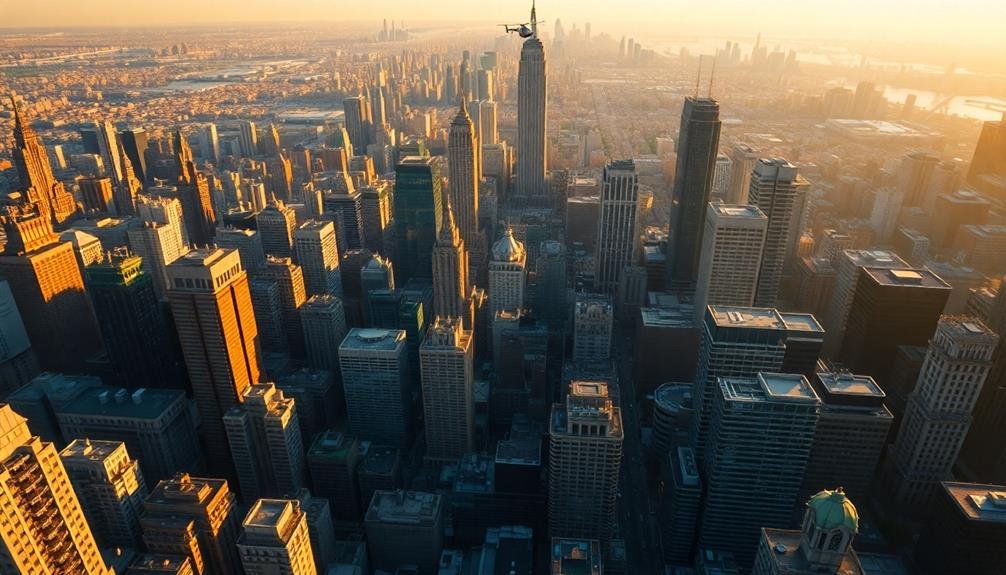
Every great film begins with a powerful first impression. That's where establishing shots come in. They're your audience's first glimpse into the world you've created, setting the tone and atmosphere for what's to come. As a filmmaker, you'll use these shots to orient viewers, giving them essential information about the location, time period, and mood of your story.
Consider the wide, sweeping shots of New York City in classic films like "Manhattan" or the vast desert landscapes in "Lawrence of Arabia." These aren't just pretty pictures; they're visual storytelling tools that immerse the audience in your narrative. You're not just showing a place; you're inviting viewers to step into it.
When crafting your establishing shot, think about what you want to convey. Is it the bustle of a city, the isolation of a remote location, or the opulence of a wealthy neighborhood? Use composition, lighting, and camera movement to emphasize these elements.
Creating Atmosphere and Mood
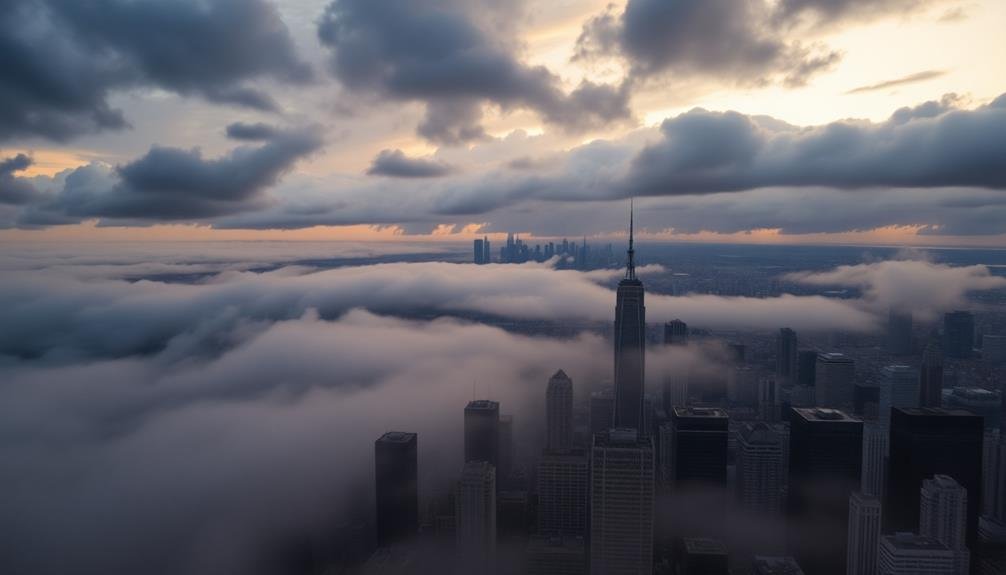
Beyond orienting viewers, establishing shots wield immense power in crafting the atmosphere and mood of your film. By carefully selecting the right visual elements, you can evoke specific emotions and set the tone for your story. Consider the time of day, weather conditions, and color palette to enhance the desired atmosphere.
Use wide shots of bustling city streets to convey energy and excitement, or showcase desolate landscapes to create a sense of isolation. Manipulate lighting to your advantage; harsh shadows can instill a feeling of unease, while soft, warm light might suggest comfort and safety.
The movement within your shot also plays a vital role. A static shot of a calm lake can evoke tranquility, while a dynamic shot of crashing waves might signal impending danger or conflict.
Don't underestimate the power of sound in your establishing shots. The right ambient noise or musical score can considerably amplify the mood you're aiming to create.
Orienting the Audience
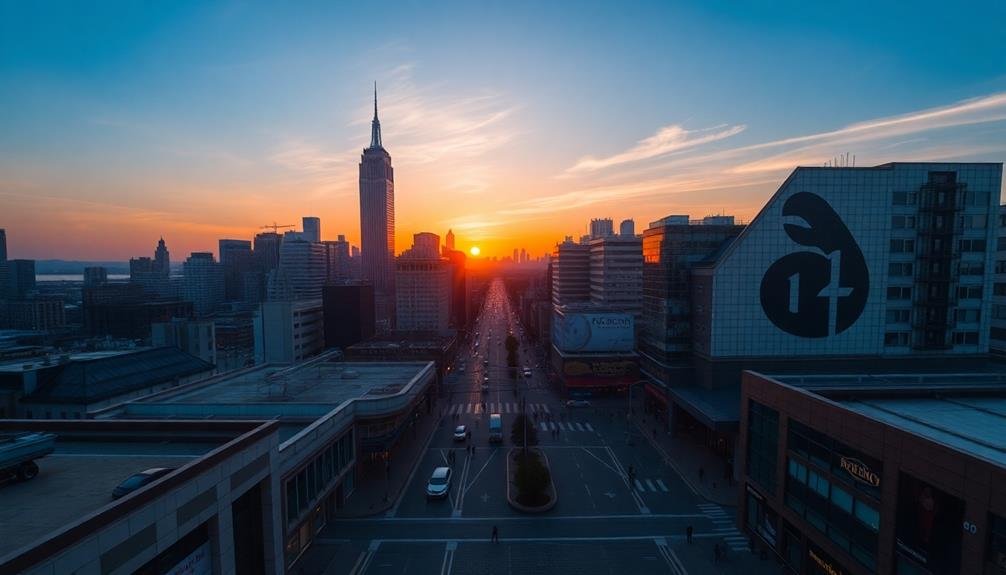
Establishing shots play an essential role in orienting you, the audience, within the film's world.
They set the scene by providing visual information about the location, time, and overall environment where the action will unfold.
Through carefully chosen spatial context clues, these shots help you quickly understand the physical relationships between characters, objects, and their surroundings, allowing for a smoother narrative flow.
Setting the Scene
Scene orientation is the primary function of establishing shots, guiding viewers into the world of the film. These shots provide vital visual information about the location, time period, and atmosphere of the upcoming scene. You'll often see wide-angle shots of landscapes, cityscapes, or building exteriors that immediately tell you where the action is taking place.
By using establishing shots, you're giving your audience essential context. You're showing them whether it's day or night, what the weather's like, and what kind of environment the characters are in. This information helps viewers quickly understand the setting and prepare for the story that's about to unfold.
Establishing shots can also convey mood and tone. A bustling city street at rush hour creates a different feeling than a deserted alleyway at midnight. You can use lighting, color grading, and camera movement to enhance the emotional impact of these shots.
For example, a slow pan across a desolate landscape can evoke a sense of isolation, while a fast-paced montage of city life can create excitement and energy.
Spatial Context Clues
Spatial context clues play an essential role in orienting the audience within the film's world. As a filmmaker, you'll want to use establishing shots to provide viewers with vital information about the setting, time, and atmosphere of your scenes.
These shots help audiences quickly understand where the action is taking place and how different locations relate to one another.
When crafting your establishing shots, consider including these spatial context clues:
- Landmarks or recognizable structures
- Natural features like mountains, rivers, or coastlines
- Urban or rural indicators (skyscrapers, farmland, etc.)
- Weather conditions and time of day
By incorporating these elements, you're giving your audience a clear sense of the environment and its scale.
You'll also help them grasp the physical relationships between characters and locations, which is vital for maintaining continuity and coherence throughout your film.
Showcasing Scale and Scope
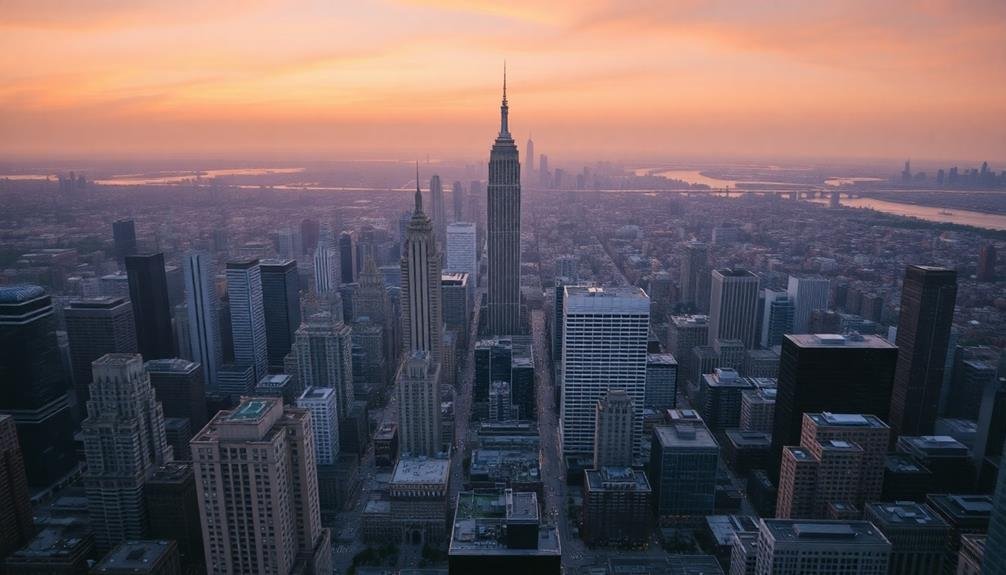
Filmmakers often employ wide-angle shots to showcase the scale and scope of a setting. These shots help you convey the grandeur of landscapes, cityscapes, or massive structures, giving your audience a sense of awe and perspective. By capturing vast expanses or towering edifices, you're immediately communicating the magnitude of the world your characters inhabit.
When you're showcasing scale, consider using aerial shots or crane movements to emphasize the vastness of a location. These techniques allow you to reveal the full extent of a setting, from sprawling deserts to bustling metropolises. You can also use human elements as scale references, placing characters or vehicles in the frame to highlight the enormity of their surroundings.
To effectively convey scope, you'll want to include multiple elements within your establishing shot. This might mean capturing a city's skyline along with its streets and inhabitants, or revealing both a mountain range and the valley below.
Enhancing Visual Storytelling
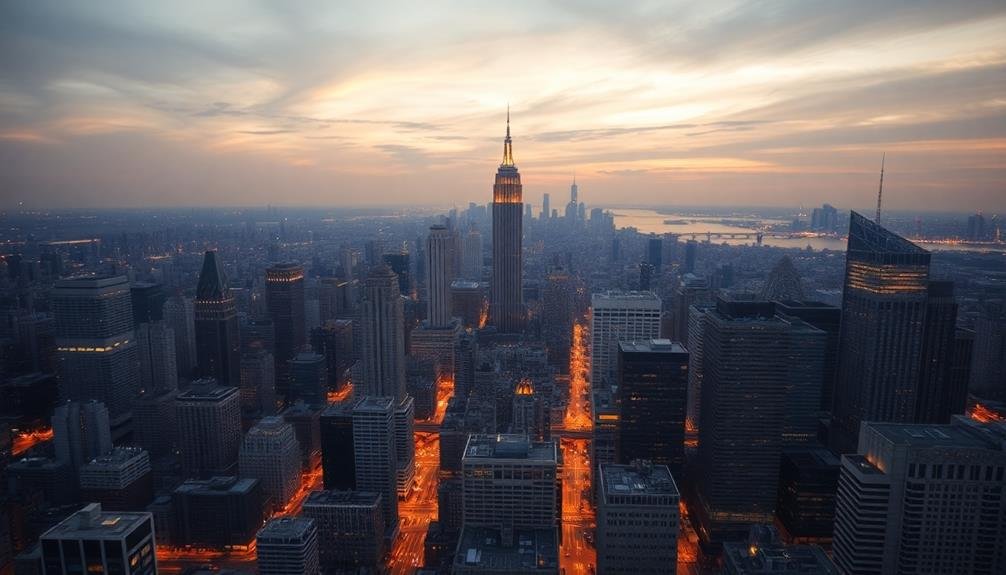
Beyond showcasing scale and scope, establishing shots play an essential role in enhancing visual storytelling. They're powerful tools that can convey a wealth of information without relying on dialogue or exposition. By carefully crafting your establishing shots, you'll create a visual language that engages your audience and deepens their understanding of your narrative.
Establishing shots can enhance your visual storytelling by:
- Setting the tone and mood
- Introducing key locations or characters
- Establishing time and place
- Foreshadowing upcoming events or themes
When you use establishing shots effectively, you're providing your viewers with vital context that enriches their experience. You're not just showing them where the story takes place; you're immersing them in the world you've created.
These shots can reveal the socioeconomic status of a neighborhood, the passage of time, or the emotional state of a character before they even appear on screen. By mastering the art of the establishing shot, you'll elevate your filmmaking and create a more cohesive, visually compelling narrative that resonates with your audience long after the credits roll.
Transitioning Between Scenes
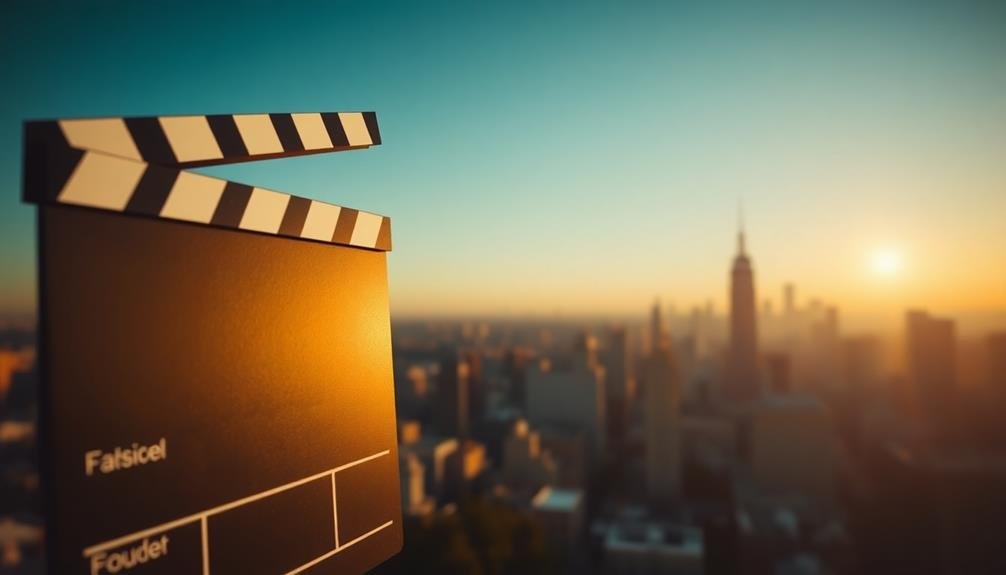
Establishing shots can be powerful tools for shifting between scenes in your film.
You'll find they're particularly effective in creating a smooth scene-to-scene flow, guiding your audience seamlessly through different locations or time periods.
Smooth Scene-To-Scene Flow
The art of smooth shifts between scenes is essential for maintaining narrative flow and viewer engagement. When you're moving between scenes, establishing shots can be your secret weapon. They provide a visual bridge, helping your audience understand the new setting and context without jarring them out of the story.
To create smooth scene-to-scene flow using establishing shots:
- Start wide: Begin with a broad view of the new location, gradually narrowing your focus to specific elements or characters.
- Use visual cues: Incorporate elements that link to the previous scene, such as similar colors, shapes, or movements.
- Match the mood: Confirm the tone of your establishing shot aligns with the emotional state carried over from the previous scene.
- Time it right: Adjust the duration of your establishing shot based on the complexity of the new setting and the pace of your narrative.
Visual Narrative Continuity
Visual narrative continuity builds on the concept of smooth scene-to-scene flow, extending it throughout your entire film. It's about creating a cohesive visual story that guides your audience through the narrative seamlessly. To achieve this, you'll need to carefully plan your establishing shots to maintain consistency in tone, style, and pacing across different scenes and sequences.
Consider how each establishing shot relates to the ones before and after it. You're not just shifting between individual scenes; you're weaving a visual tapestry that spans your entire film. Use recurring visual elements, color schemes, or shot compositions to create a sense of unity. This doesn't mean every shot should look the same, but rather that they should feel like they belong to the same visual world.
Pay attention to the rhythm of your establishing shots. Vary their length and complexity to match the pace of your story. In intense moments, quick, dynamic establishing shots can heighten tension. For quieter scenes, longer, more contemplative shots can slow things down.
Establishing Time and Place
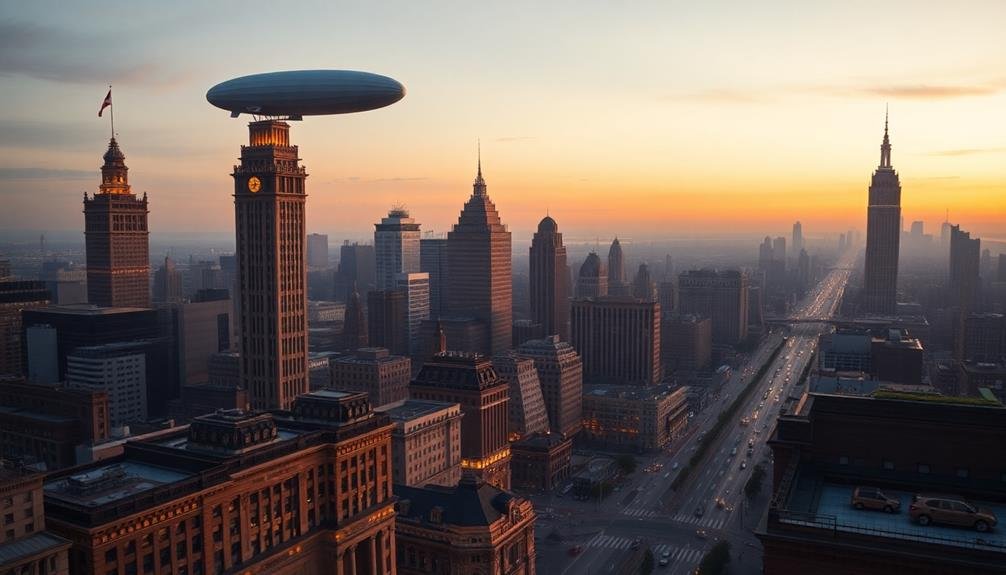
One of the primary functions of establishing shots is to orient viewers in time and place. These shots provide essential context for the scenes that follow, helping your audience understand where and when the action is occurring.
You'll often use wide shots to showcase the setting, whether it's a bustling city or a remote countryside.
To effectively establish time and place, consider these elements:
- Lighting: Use natural or artificial light to indicate the time of day or season.
- Architecture: Showcase distinctive buildings or landmarks to pinpoint the location.
- Weather: Depict atmospheric conditions to set the mood and time of year.
- People and activities: Include characters or extras engaged in time-specific actions.
Frequently Asked Questions
How Long Should an Establishing Shot Typically Last?
You'll typically want to keep your establishing shots brief, lasting between 2 to 10 seconds. It's long enough to set the scene but short enough to maintain viewer interest. Adjust based on your film's pacing and style.
Can Establishing Shots Be Used Effectively in Low-Budget Productions?
You can use establishing shots in low-budget films effectively. Get creative with your resources, use natural locations, and focus on composition. Even simple, well-framed shots can set the scene without breaking the bank.
Are There Alternatives to Traditional Establishing Shots in Modern Filmmaking?
You can use alternatives to traditional establishing shots in modern filmmaking. Try drone footage, time-lapse sequences, or creative montages. You'll also find that character-focused openings or unique sound design can effectively set the scene without conventional establishing shots.
How Do Establishing Shots Differ in Various Film Genres?
You'll notice establishing shots vary across genres. In action films, they're often fast-paced aerial views. Horror movies use eerie, isolated locations. Romcoms showcase charming cityscapes. Sci-fi films present futuristic or alien landscapes. Each genre adapts to its unique atmosphere.
What Equipment Is Best for Capturing High-Quality Establishing Shots?
You'll want a high-resolution camera with a wide-angle lens for sweeping landscapes. Don't forget a sturdy tripod for stability. If you're aiming for aerial shots, consider investing in a drone with a quality camera.
In Summary
You've seen how establishing shots are essential for elevating your filmmaking. They're not just pretty pictures; they're powerful storytelling tools. By mastering these shots, you'll set scenes, create atmosphere, orient viewers, showcase scale, enhance visual narratives, smooth shifts, and establish time and place. Remember, a well-crafted establishing shot can speak volumes without a single word of dialogue. So go ahead, experiment with these techniques, and watch your films reach new cinematic heights.

As educators and advocates for responsible drone use, we’re committed to sharing our knowledge and expertise with aspiring aerial photographers.




Leave a Reply